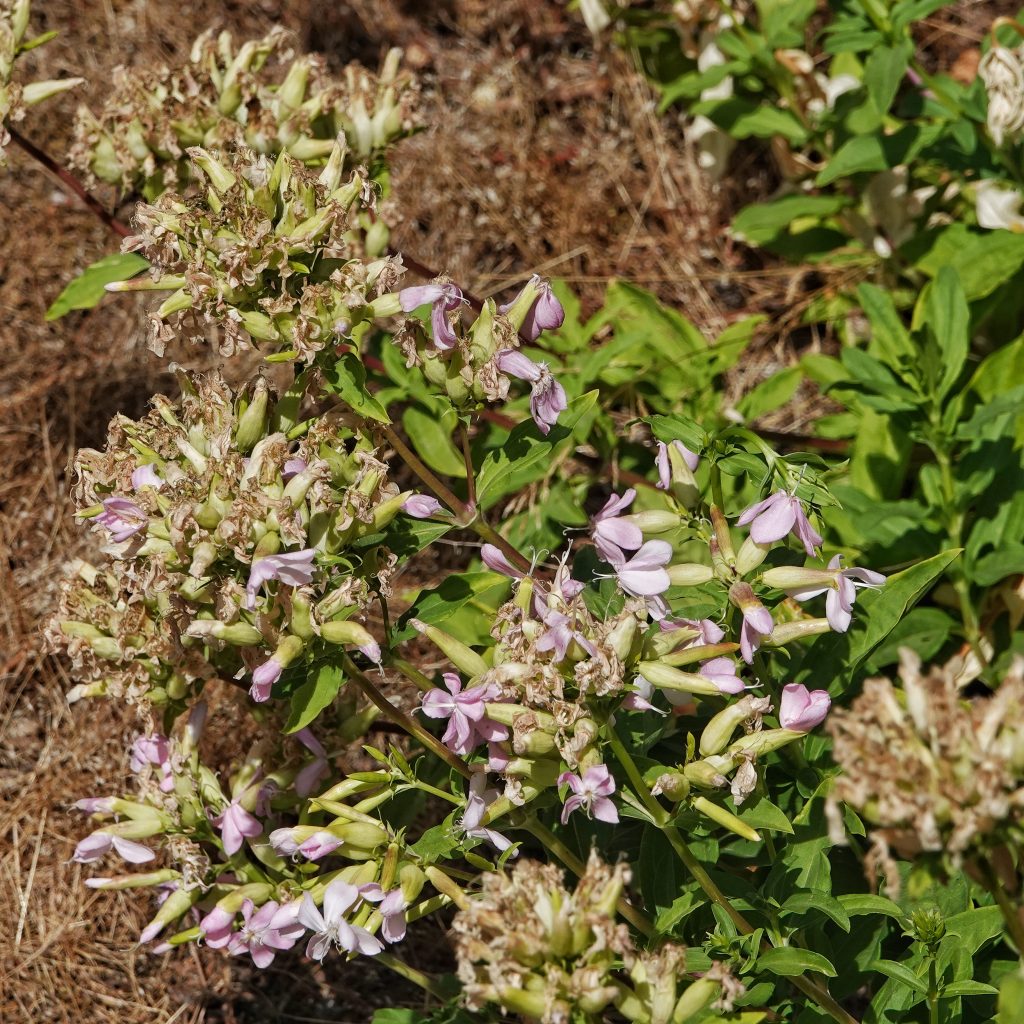
They say this plant blooms from June through September, but I always associate it with the month of August. It seems like it’s always very warm when I see it, and the first time I spot it each year is usually leaving a parking area or roadside pulloff to get down to a river and cool off. This year was the first time I’d ever noticed white flowered Saponaria officinalis, though apparently that color phase is not uncommon. But one of the things I’ve always valued this plant for is the rare spots of pink in a sere brown landscape.
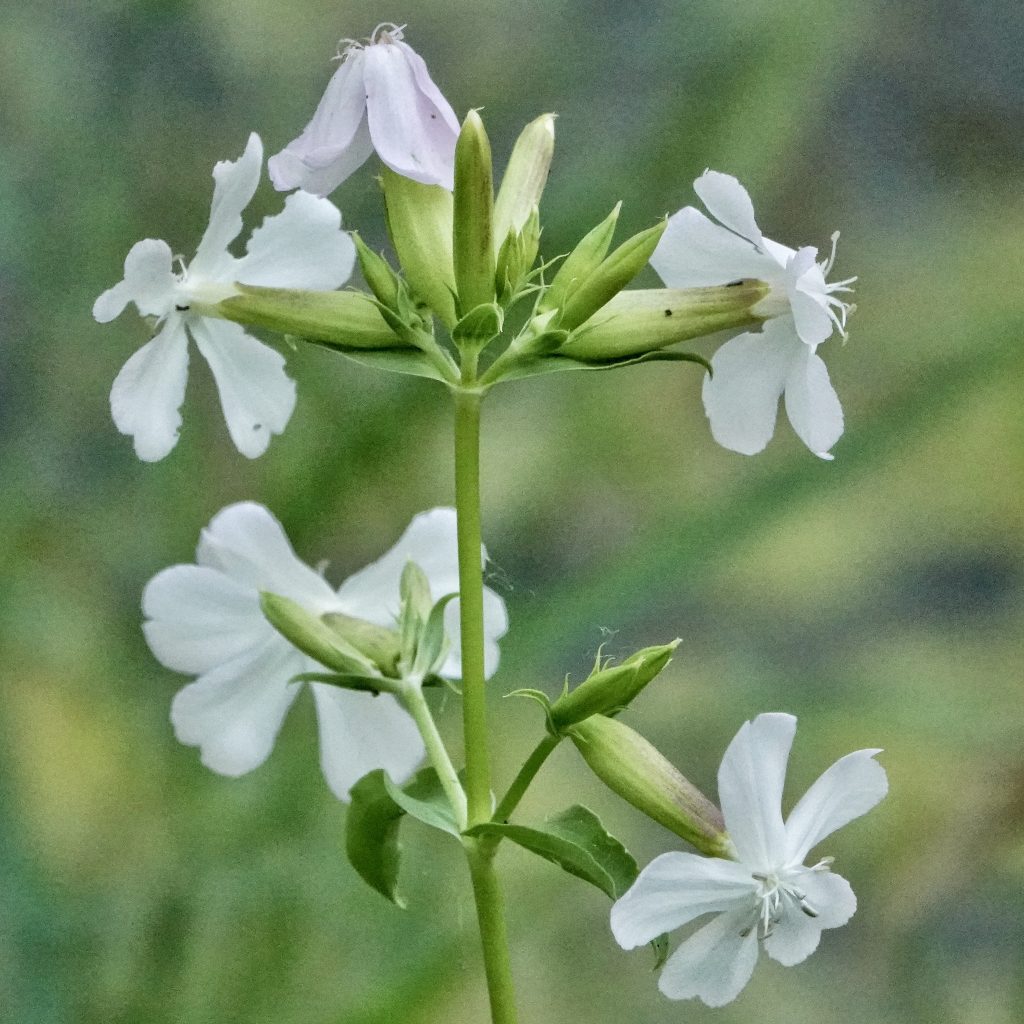
This European introduction in the family Caryophyllaceae goes by many common names, including common soapwort, crow soap, wild sweet William, London Pride, Latherwort, Lady’s-wash Bowl, Old Maid’s-pink, Fuller’s Herb and soapweed, but I’ve always known it as bouncing-bet, which is said to come from the resemblance of the reflexed petals to the rear end of a washerwoman named Bet, although I had no idea of that etymology before researching this profile. The other names either come from it’s common usage as a cleansing fluid, or from the fact that it was commonly planted in cities to mask bad smells from sewage and garbage.
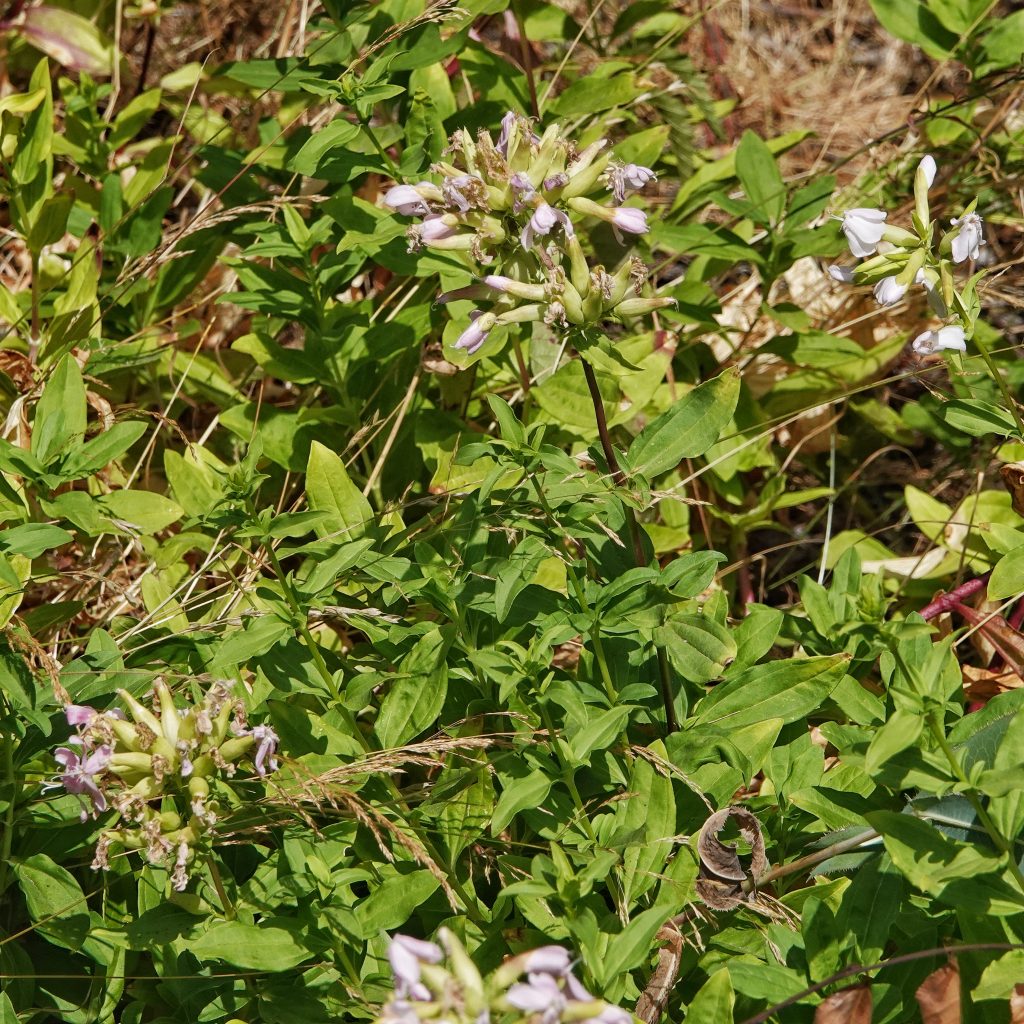
Saponaria officinalis has been used for a variety of medicinal purposes, including jaundice, flu, herpes, etc., but the saponins in it are toxic and, despite its usage as an ingredient in many medications, using it as an herbal remedy is not advised. But those same saponins do make it an effective soap, which is safe to use on the skin (although irritating to the eyes and mucus membranes), and it is said to be effective at removing the volatile oils of poison oak and other skin irritants. But it has more commonly been used to clean surfaces, and especially fabrics, although the soap apparently smells like wet spinach. The liquid soap is made by boiling equal parts fresh and dried stems and leaves in twice as much water. After 15 minutes one strains out the leaves, and the leftover fluid is your cleaning solution.
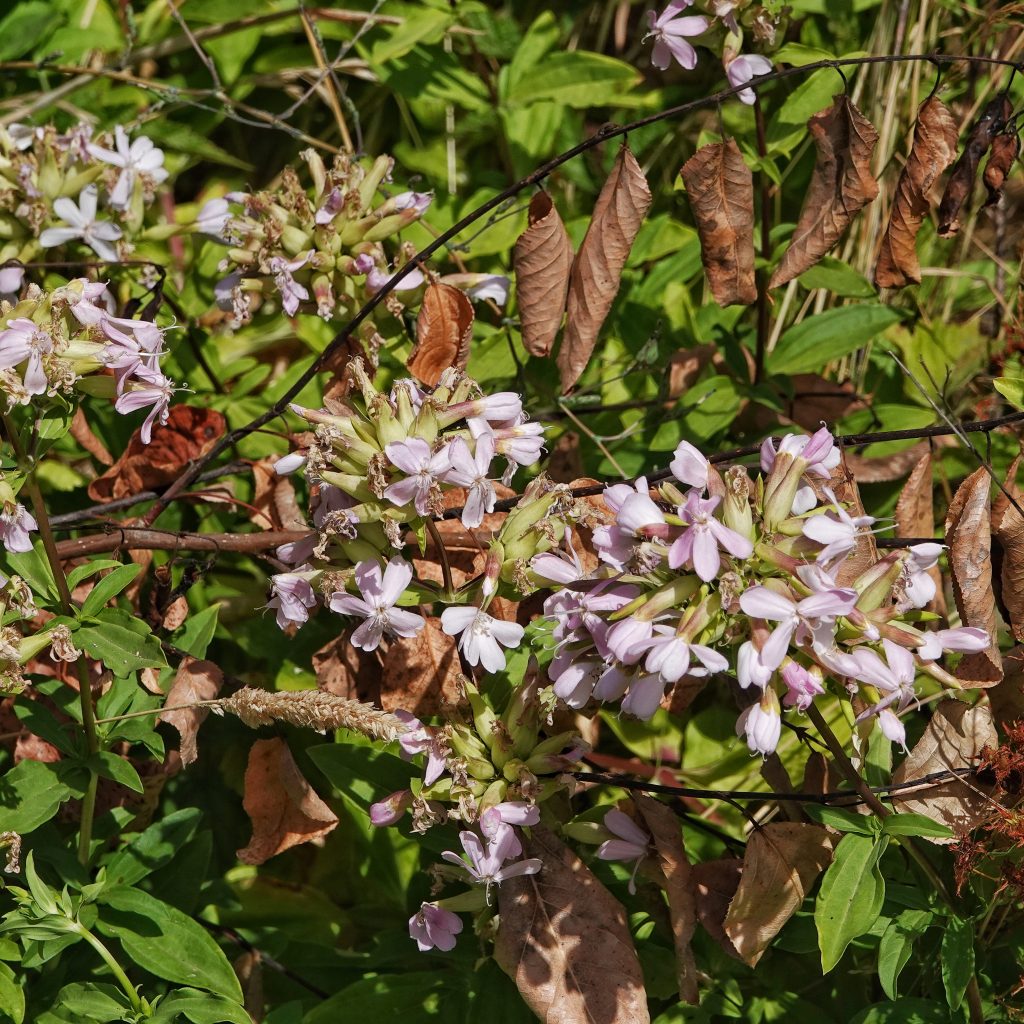
Though it is not considered a noxious weed it can be invasive in a garden setting. But many people are willing to do the work to keep it contained, because of the beautiful flowers that bloom late in the summer, and the sweet smell that the flowers produce. And one distinct advantage is that it will grow in the most barren, nutrient poor ground in the garden, in full sun, places where grass and even most weeds would shrivel and die, while Saponaria officinalis just keeps putting out its delightful blossoms.
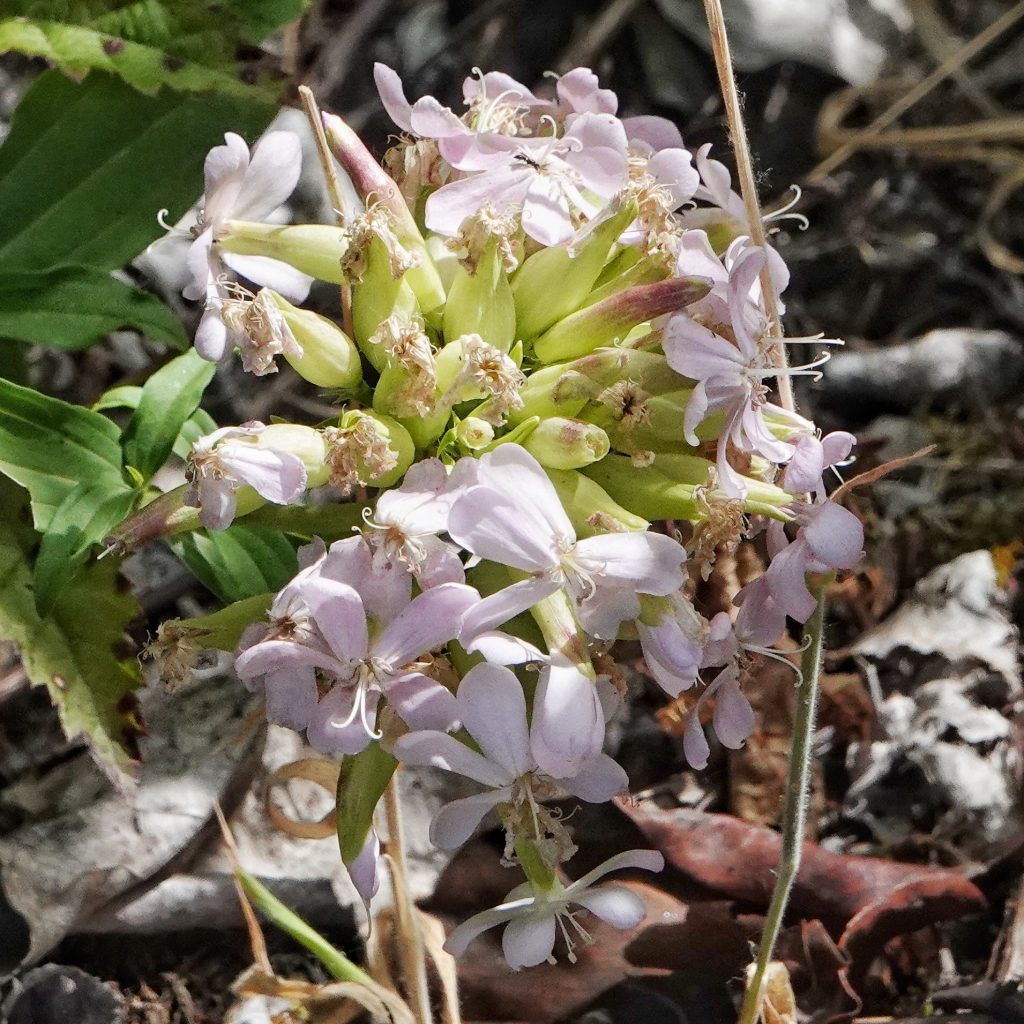
Description-Medium sized (up to 3’ tall), perennial, mostly erect, smooth, mostly hairless plant with branching above, oblong and opposite leaves, with a dense inflorescence of white to pink, 5 petaled flowers atop fused sepals/calyx; leaves are curled from the side, pointed, with smooth margins and palmate veins; calyx up to 25mm long, green to reddish; flower petals up to 15mm long, usually with a notched tip; has only 2 styles per flower.
Similar species–Silene sp. (catchflies) have 3-5 styles.
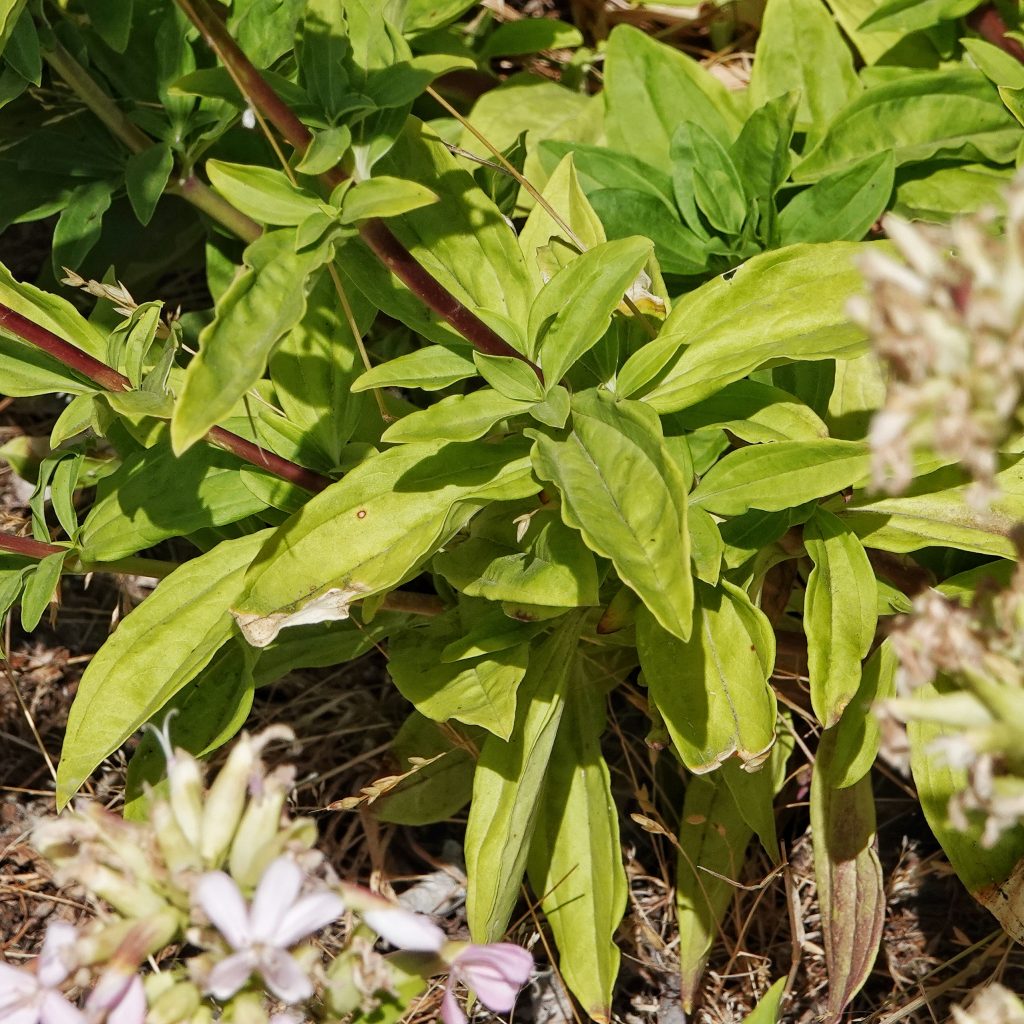
Habitat-Disturbed open areas, roadsides, forest openings, streambanks, up to 4500’ elevation.
Range-Native to Eurasia, now naturalized throughout much of North America; region wide in appropriate habitats, except absent in the most arid parts of the interior and the wettest areas along the coast. .
Reproductive timing-June through September
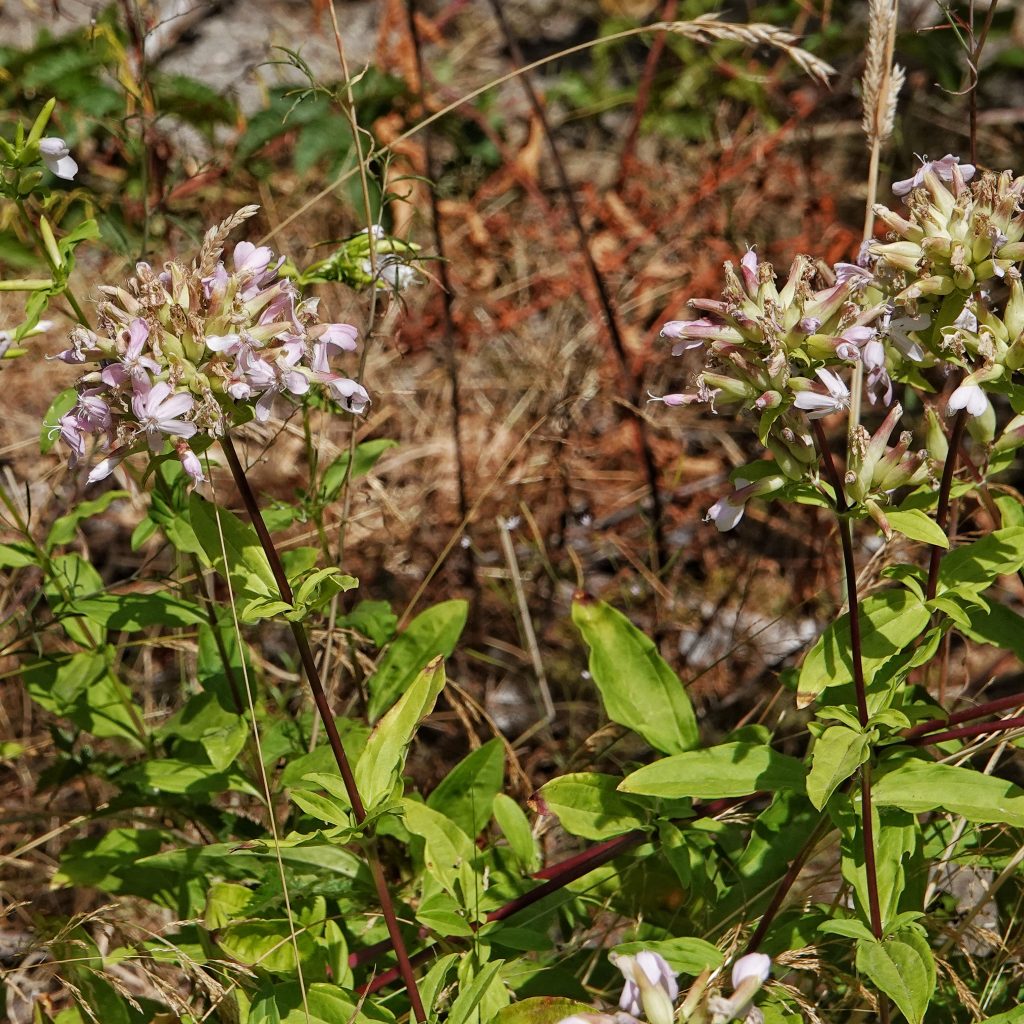
Eaten by-Larvae of the leaf mining flies Amauromyza flavifrons, the stink bugs Cosmopepla lintneriana, the tortoise beetle Cassida azurea; utilized as a larval host by the moth Hyles lineata, and probably by members of the genus Hadena and Coleophora; avoided by most grazing mammals.
Etymology of names–Saponaria is from the Latin word for ‘soap’, referring to these plants forming lather when mixed with water and agitated. The specific epithet officinalis is from the Latin word for ‘pertaining to an office/shop’ and refers to it being sold as an herb.
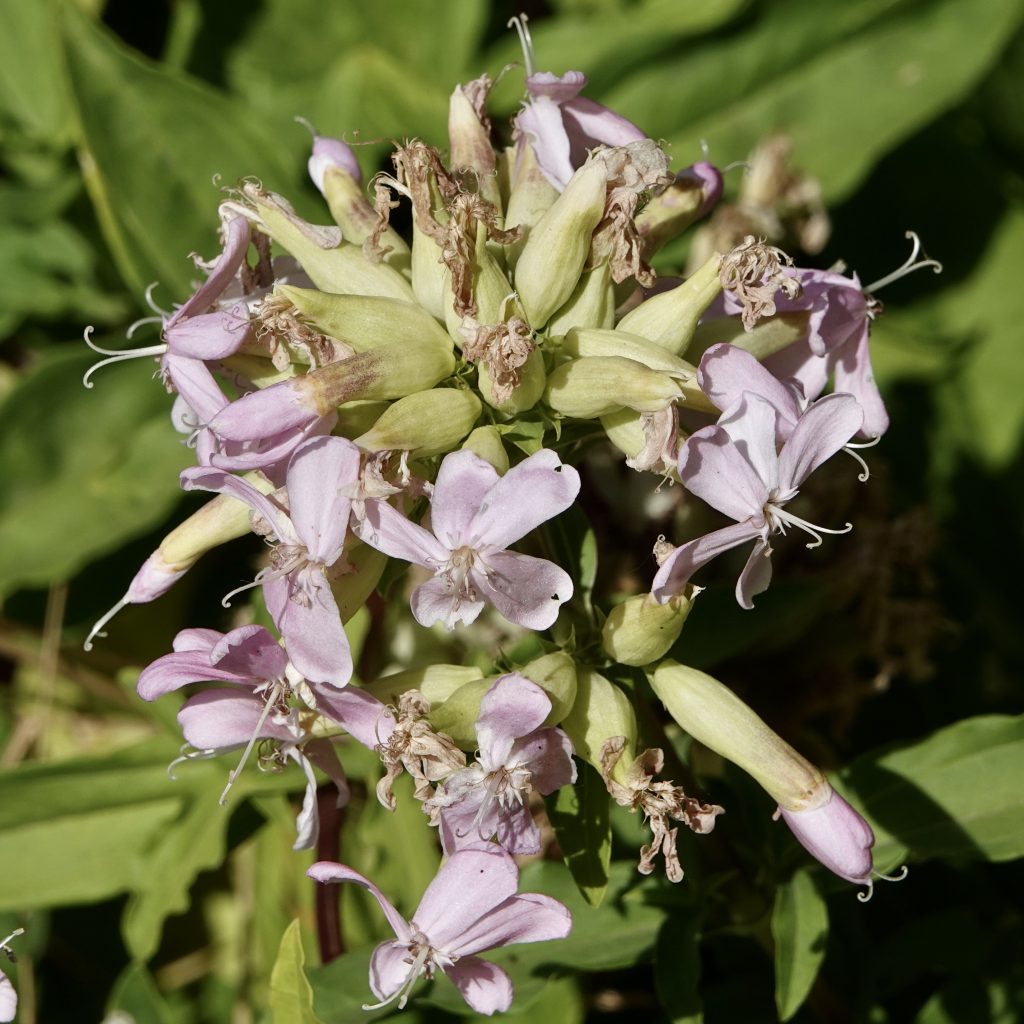
Bouncing Bet, Soapwort, Saponaria officinalis L.
Saponaria officinalis – Bouncing-bett
https://plants.ces.ncsu.edu/plants/saponaria-officinalis/
OregonFlora Saponaria officinalis
Saponaria officinalis Soapwort, Bouncingbet PFAF Plant Database
Using Weeds: Soapwort | awkward botany
